|
What a pity that America lies so far away from here
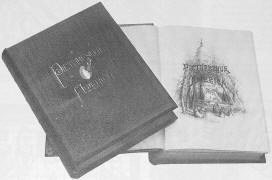
Hans Christian Andersen never managed to visit America, that distant, fabulous continent. But he dreamt and wrote about it -and today children gather round his statue in Central Park to listen to the great Danish writer's fairy tales.
By Erik Haugaard
In 1874, Andersen received a present of w. c. Bryant's Picturesque America and 200 dollars. The money paid for the book had been collected from among American schoolchildren.
A long time ago, when I was a lot and the world a little younger, Hans Christian Andersen entered my life not as a famous story-teller but as a ghost, a spectre momentarily conjured up. Brat tIe Street in Cambridge, Massachusetts, is filled with history. One walks lightly there, feeling that, although time passes, it does not always destroy. There are few places we can return to, but Brat tIe Street is one of them. Should I go there now, I might meet George Washington whose headquarters had been in the old house that later became the home of the poet Henry Wadsworth Long fellow. But almost as important to me, I might just be lucky enough to catch a glimpse of myself as a young man of nineteen, with so many hopes and ambitions. The sunlight shining on the painted walls of the old colonial house would not be different from what it was in 1942, when, newly hired to translate a few letters which Hans Christian Andersen had written to Long fellow, I made my way up the drive and knocked at the door .
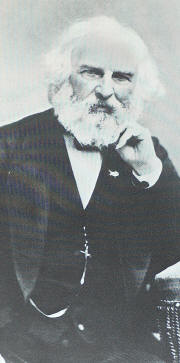
Henry Wadsworth Long fellow, Andersen's American correspondent.
Down in the cellar of Long fellow's house, which is also a museum, the more important manuscripts are kept. It has
a musty odour, which I am sure makes scholars' hearts beat faster. I preferred the upper rooms that were so beautifully light and airy, so well fitted for life. But scholars must stay in dungeons; and there I sat under an electric bulb, which cast its hard, shadowless light on missives written a century earlier by the soft rays of a kerosene lamp or flickering candle light. What secrets did these letters reveal? None, I am afraid. They were only harmless, friendly messages. But there is a magic about such a handwritten letter: the creases where it was folded had been made by Andersen, and the slit of the envelope opened by Long fellow. Did the mailman then walk his rounds down Brat tIe Street; and did someone at the breakfast table ask, 'Were there any interesting letters?' And did the poet, after slicing the top off his boiled egg, answer, 'Oh, there was a note from Andersen, I must answer it soon.'
The world has shrunk since those letters were written; the ocean is not weeks or even days wide, only hours. And yet in some ways people were closer to each other, more intimate, than we are today. Long fellow, Dickens, Andersen: all inhabited the same world of art and poetry. Although envy and enmity existed, they were personal and did not challenge the Muses.
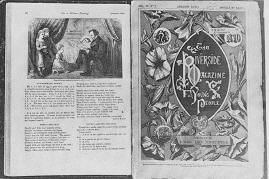
Poetry was still deemed above the
more vulgar concerns of man; it was still holy, still nearer to God. The sharp philosophical and political rifts had not yet begun to appear, as yet the importance and worthwhileness of art were taken for granted by those who created it, and this gave their lives a serenity which we might envy.
Ten of Andersen's tales from his later years were first published in the American "Riverside Magazine".
A reality and a mythical country
America in Andersen's lifetime existed both as a reality, a place on a globe or a map, and as a mythical country. Andersen wrote: 'What a pity that America lies so far away from here!' But it was this very distance that enabled this country on the edge of the world to retain its wonder and mystery. The odyssey was dangerous and long; few attempted it except from a great spirit of adventure or, as in most cases, out of despair and desperation. Those who returned to their original homes did not always adhere strictly to the truth about the places where they had been; heroes seldom belittle the deeds which give them their title. Yet more important was the fact that there was some reality to the claim that America was fairy-land. Although gold was not to be picked up on the streets, it was to be found in streams and rivers, and many beggars became as wealthy as princes. Maybe there were no giants beyond the endless ocean, but there were giant trees which made the oaks of Denmark look like saplings. In the poetic essay 'The Twentieth Century Muse' Andersen tries to guess in which place the Muse might choose to live: would it be 'California, that fairy-tale land, where the redwood lifts its head high above any other living thing?'
Andersen spoke of the mythical America when it suited
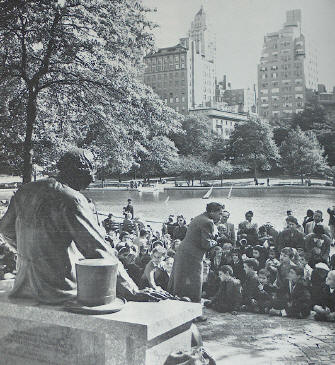
H.C. Andersen statue in Central Park where his fairy tales are read aloud to children.
him, but he also knew the real America, as he reveals in the same essay: 'that continent that Columbus discovered; that land of liberty, whose original inhabitants were hunted down like wild animals, where Africans were turned into beasts of burden, the land from which we hear The Song of Hiawatha
?
Did the inspiration for that outburst come from the author of The Song of Hiawatha? Longfellow was an abolitionist, and, by correspondence, the two poets had become friends.
Master Bloodless
The most significant connection between Andersen and the New World is to be found in his interests and his philosophy. The technical world of the future fascinated him. No man in the nineteenth century was more often photographed than Andersen; and this was not only an expression of his vanity, he considered it a new art. To Andersen scientists and inventors were also poets. Was not their spirit of wishing to know and understand the same as the artist's? He did not conceive of the gulf that today separates art from science. The trials of the Greek poet Homer and the misadventures of the inventor of the steamboat, the American Robert Fulton, are both included in Andersen's essay 'The Thorny Path.' If the world was to be divided, it was between those who strove to fulfil the gifts that God had given them, and those who out of envy or stupidity victimized them.
Although Andersen heralded the world that was to come, he was not without misgivings. He called the machine Master Bloodless, and he hoped we would make it our servant. Few can claim today that we have succeeded. Many believe the machine to be the symbol of evil and many more are its willing slaves. Yet 'eternity is long', as Andersen tells us in the lovely fairy tale 'Everything in its Right Place;' and we may still learn to be masters of that which we, ourselves, have created. Then we may experience a time in which science inspires the arts, as Andersen suggests in 'The California of Poetry .'
In the last years of his life, Andersen found in the American author and editor of The Riverside Magazine, Horace E. Scudder, an admirer and friend. Rewarding for both men, this relationship resulted in the amazing fact that ten of Andersen's tales from his later years appeared first in the United States of America, instead of his native land. Among these was 'The Most Incredible,' a brilliant tale of 'fascism', which, unfortunately, is more poignant today than when it was written. 'The Adventures of a Thistle' was another of the stories published first in America, and I would include it among Andersen's finest works.
Immortality is a word we use to describe a heart and a brain that cannot die. Certainly the fact that we are now celebrating the hundredth anniversary of the poet's death means that Andersen has won this final and greatest honour of all. His statue stands in Central Park and there his fairy tales are read aloud to children. Do they know that he was Danish, and does it matter? They may think him an American, for the story of his life follows so closely the American dream. He called his fairy tales his 'gift to the world'; and the children have come to hear the song of the nightingale, a treasure which belongs to all of us, be we fishermen or emperors.
The author: Erik Christian Haugaard was born in Copenhagen 1923. Went to the United States at America in 1940, served with the Royal Canadian Air Force 1943-45. Now lives in Eire. Has written poetry and plays, but is best known tor his children's novels. His translations of Andersen's complete fairy tales and stories were published 1974 by Doubleday and Co., Inc., New York, and Victor Gollancz Ltd., London.
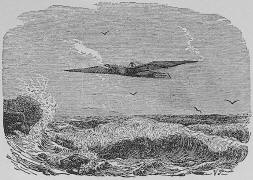 The first science fiction writer? The first science fiction writer?
Was Andersen the first science fiction writer? It is partly a matter of definition, of course, but certainly there are elements of the genre in his sketch 'Thousands of Years Hence', of 1852. 'Yes, thousands of years hence they will come flying on wings of steam through the air and over the ocean!' The 'electro-magnetic wire' will have 'telegraphed the size of the aerial caravan' as young Americans travel to see Europe's ancient monuments and crumbling ruins, speeding on their way under the Channel Tunnel.
'"There's lots to see in Europe," said the young American, "and we saw it in a week! And it's possible to do it, as the great traveller' (mentioning a contemporary name) 'has shown in his celebrated work, Europe Seen in Eight Days.' One wonders -did Jules Verne know this piece when he wrote Around the World in Eighty Days twenty years later?
|